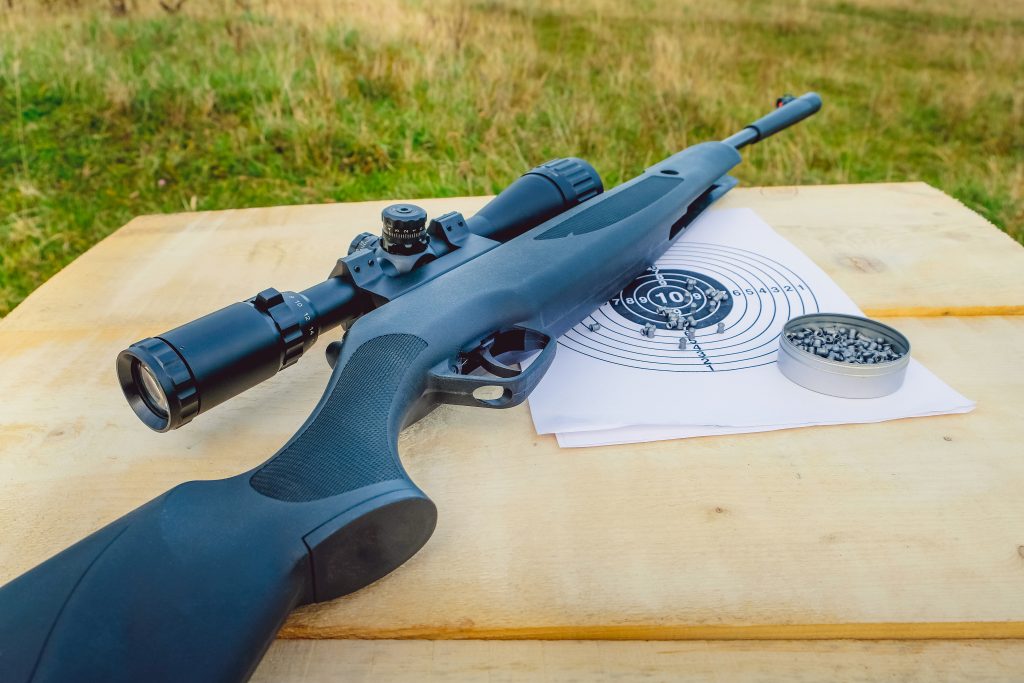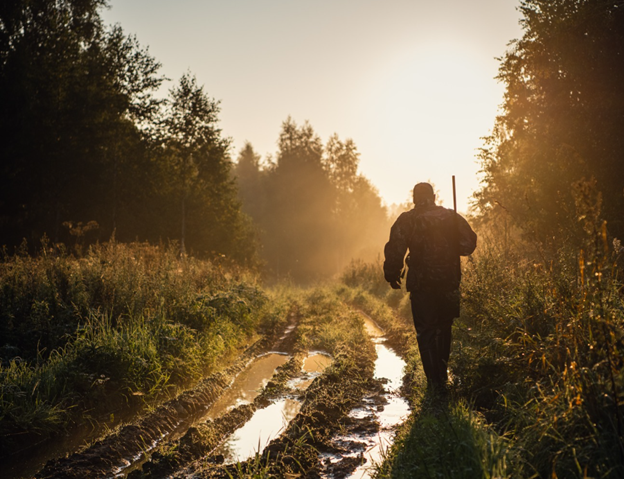Summary
Airbow and airgun legality for hunting use varies by state. Where some limit airgun use based on minimum calibers, velocities and ammunition grain weights based on the game species, other states do not mention airguns at all, leaving ambiguity in the minds of prospective users. As advances in technology continue, legislators are generally encouraged to work alongside their state fish and wildlife agency to ensure that the laws and regulations related to new technologies are clearly stated; and, more specifically, to consider the inclusion of Airbows and airguns in their state’s existing firearms seasons.
Introduction
An airgun propels projectiles using compressed air or other gas, rather than using an explosive charge like a traditional firearm. Regulations surrounding the use of airguns vary significantly from state to state. Based upon airgun technology, the arrow shooting airgun – a hybrid hunting product that uses compressed air to fire an arrow or bolt – has now been developed. Today’s airguns, and now the arrow shooting airgun, demonstrate a striking advancement in this technology beyond the BB and pellet guns of yesteryear. Many of the products available on the market today fire larger caliber projectiles and now offer shooters an expanded kill range (up to 100 yards) with a product that is capable of harvesting big game animals. Unlike other hunting implements, airguns and arrow shooting airguns do not currently support the American System of Conservation (ASCF) through excise taxes, and therefore, the sale and use of these devices do not contribute to the conservation efforts of state fish and wildlife agencies as do more traditional methods of take.
History
Airgun technology dates to the earliest days of the United States. Lewis and Clark famously utilized a .46 caliber air rifle in their expedition following the Louisiana Purchase in 1804. Today, large bore airguns can ethically harvest many of the most popular game species and are presently legal methods of take for white-tailed deer and/or other medium-large game in 26 states.
Issue
Airgun legality for hunting use varies by state. Where some limit airgun use based on minimum calibers, velocities, and ammunition grain weights based on the game species, other states do not mention airguns at all. Further, almost half of the states prohibit the use of airguns and arrow shooting airguns for big game hunting entirely. This variation between states leaves ambiguity in the minds of prospective users and manufacturers, which is why manufacturers often ask prospective users to confirm local regulations in their respective state before trying to hunt with airguns. To date, no state has entirely legalized the use of arrow shooting airguns in archery-only seasons, and the Archery Trade Association has released a position that states that arrow shooting airguns are not archery equipment. The Airgun Sporting Association supports this position and refers to this equipment as “arrow shooting airguns.”
Unlike other hunting implements, airguns and arrow shooting airguns do not get taxed through the ASCF, and therefore, their sale and use do not contribute to conservation efforts in the same manner as firearms and archery equipment. By authorizing the use of this equipment without some sort of structure in place to ensure that this technology pays into the ASCF, state fish and wildlife agencies risk losing out on conservation funding when sportsmen and women purchase these products instead of more traditional hunting implements such as bows, crossbows, muzzleloaders, and firearms.
While the cleanest solution to this issue would be to include airguns alongside other methods of take as items taxed through the Wildlife Restoration Program (Pittman-Robertson), doing so would require a change in federal tax statute which can take many years to achieve. In the interim, states can implement a Conservation Airgun Stamp, which sportsmen and women who wish to hunt with an airgun would be required to purchase alongside their other privileges when purchasing their hunting licenses. This Stamp would be modeled after similar stamps/tags that are often required for other methods of take such as crossbows or muzzleloaders. The Conservation Airgun Stamp concept also benefits from having the support of the airgun industry, as such a stamp will allow for a more accurate assessment of how widely these devices are being used for hunting purposes, and will allow manufacturers to more effectively and efficiently market their products to targeted demographics and potential future customers.
Points of Interest
-
- Like most handgun bullets, traditional muzzleloader round balls, and arrows tipped with broadheads, airgun pellets/bullets transmit little of the “shock” value on the impact that is associated with high velocity (“high-powered”) rifle projectiles. Thus, an ethical harvest requires either (1) precise shot placement on a vital organ or, (2) sufficient projectile energy to create a wound channel that is large enough – or long enough – to cause fatality through blood loss. Large bore airguns and arrow shooting airguns provide a platform necessary to satisfy both criteria.
- Unlike traditional firearms, many airguns and arrow-shooting airguns are considered to be “hearing safe” in that they produce less than 140 dB of sound when fired (the Occupational Safety & Health Administration’s threshold for an impulse noise).
- In 2019, Georgia (SB 72) and Virginia (HB 1393/S 859) enacted legislation that authorizes and provides opportunities for some sportsmen and women to hunt with an airgun or arrow shooting airguns.
- In 2022, Utah Governor Spencer Cox signed UT SB 205, which allows sportsmen and women in Utah to hunt with airguns. The bill charged the state’s Wildlife Board with designating which species could be hunted with an airgun and where the funding would come from by November 2024.
- Also in 2022, the Oklahoma Legislative Sportsmen’s Caucus led an effort to pass SB 1571, officially legalizing the use of arrow shooting airguns during Oklahoma’s firearm deer seasons while creating a one-time conservation stamp that hunter must purchase before using arrow shooting airguns to pursue deer.
Moving Forward
As advances in technology continue, legislators are generally encouraged to work alongside their state fish and wildlife agency to ensure that the laws and regulations related to new technologies are clearly stated and easily understood by sportsmen and women, which will help to eliminate ambiguity related to the use of these items afield. Until such time that airguns and arrow shooting airguns are included in the Pittman-Robertson Act, states are encouraged to implement state-level funding mechanisms such as a Conservation Airgun Stamp to ensure that all legal methods of take for hunting contribute to the conservation funding matrix. Unless there is a mechanism in place through which airguns and arrow shooting airguns contribute to conservation funding, states are dissuaded from authorizing them as a method of take during any hunting season.
Related Articles
Why It Matters: New Hampshire House Bill 211 (HB 211), was passed out of the...




